Before 1900 despite its weaknesses in effective management o
Before 1900, despite its weaknesses in effective management of workers, manufacturing leadership was well provided by top management. They were technological entrepreneurs, archictects of productive systems, veritable lions of industry. But when they delegated their production responsibilities to a second-level department, the factory institution never recovered its vitality. The lion was tamed. It\'s management systems became protective and generally were neither enterpreneual nor strategic. Production managers since then have typically had little to do with initiating substantially new process technology-in contrast to their predecessors before 1900 (skinner 1985).
D) how is Japan (or Germany) different from (or the same as) America with regards to this trend in manufacturing leadership?
E) taking the structural charestaristics of manufacturing enterprises (e.g., scale, complexity, pace of technological change) as given, what can be done to revitalize manufacturing leadership?
Solution
Strategic Windows: their nature.
The nature and purpose of strategy and how it is formulated. The nature of marketing strategy and how this should take account of the interests of various stakeholders when involving such things as, product/service development and delivery, promotional mix, support services, manufacturing and production processes, R&D, and material purchasing affect the stakeholders.
Other factors in the business environment that influence marketing strategy: political, economic, socio-cultural and technological (PEST).
Marketing and competitors: how a firm must be able to position itself competitively in the minds of its customers so that its products and services stand out very favourably in important respects in relationship to competitors.
Matching the firm’s products / services with opportunities and threats in the market place. The limited periods during which the fit between the key requirements of a market and the particular competencies of a firm competing in that market are at an optimum. Investment in a product line or a market area should be timed to coincide with periods during which a strategic window is open. Correspondingly, withdrawal should be considered where something which was a good fit, is no longer a good fit. Ways in which a market can evolve and how firms might develop a competitive strategy to take advantage of Strategic Windows.
Portfolio Analysis
How organisations create their own environments rather than simply adapt to existing ones. How they select the strategic windows of opportunities and threats through which they want to look out into the world and develop and market product and services to meet the needs of what they observe to be required in the face of environmental turbulence.
How well the fit between an organization’s products/services meet the needs presented by the windows of opportunities and threats is a fitting start for exploring the subject of strategic marketing. It introduces the many factors that impinge on the firm’s ability to operate in a strategically successful manner. These factors are both internal and external to the organization and form subjects in their own right which will be explored in subsequent lectures.
Central to the success or failure of a business is the health of its product (or service) mix. The product life cycle concept is a useful conceptual framework within which to study how firms can vary their marketing strategies. At different stages in the product life cycle certain marketing strategies seem to be more appropriate than others. The life cycle concept also points to the different earning patterns of products or services at various points in time. It indicates that it is necessary to have a balanced portfolio of products services in terms of cash generating capabilities in order to ensure steady-sales and profits at all times. Since products will generate different cash flows and profits over their lives it means that the firm has to constantly review its product mix, prune its product lines and introduce new products from time to time in order to maintain long-run profits and stay in business.
Discuss product portfolio models – e.g. the BCG (Boston Consulting Group) matrix and the the Directional Policy matrix. Point to the use and limitations of such models – e.g. that they are useful diagnostic tools but more formal and detailed planning mechanisms are required to evolve and evaluate detailed strategies.
Analysis of the business
Understanding a business in depth is the goal of self analysis and is based on detailed current information on sales, profits, costs, organizational structure, management style and other factors. Approaches include: focus on marketing competencies and the resource-based view of the firm which are central to any thinking about self analysis from a marketing perspective. Next there is value chain analysis which examines the elements upon which a competitive advantage can be based. Other useful frameworks include Kay’s distinctive capabilities and the Balanced Scorecard. Then there is shareholder value analysis which provides a financial evaluation of a business. These might be briefly discussed and illustrated.
One should also mention sales and profitability analysis along with the need to implement more qualitative measures of analysis which try to ascertain customer perceptions of the organization and its products or services.
Creativity in business is an important issue and there is a need be aware of problems associated with negative mind sets and blocks to creativity. Discuss how such problem can be circumvented and illustrate some of the creative problem solving techniques mentioned in the chapter in the book.
Note: this is a lengthy chapter in the book with many techniques and topics that can be developed substantially. It may be advisable to have more than one lecture on Analysis of the Business and to spend more time on the various elements involved.
Industry Analysis
How understanding the nature of the industry and how it changes is thus crucial to understanding the process of how strategic-windows can be opened and closed by external forces.
The difference between industries and markets and whereas markets can be looked upon as groups of customers with similar buying needs, industries are collections of organizations with common products and technologies. How knowledge of markets and industries helps to identify competition.
Examine how as industries progress through their life cycles, the nature of competition and consumer demand changes and that this then affects the opening and closure of strategic windows. The strategies and problems that firms adopt or encounter when operating in different stages of the industry life cycle or in different types of industrial settings differ. Emphasize that an understanding the stage of the industry life cycle in which a firm is operating is imperative.
Introduce the notion of strategic groups.
Illustrate SPACE analysis which summarizes a large number of strategic-issues in a few dimensions. It relates industry strength to competitive advantage and the financial strength of a firm. The Boston Consultancy Group competitive advantage matrix may also be introduced and examined. This recognizes that strategic groups within an industry have different levels of profitability and it helps to classify the competitive environments that coexist within an industry.
Market Analysis
Examine the purposes of market analysis to assess its prospects for participants and understand the dynamics of the market. One needs to identify emerging key success factors, trends, threats and opportunities and to develop strategic questions that can guide information gathering and analysis. Measuring the size of the market, identifying the trends and being able to predict how the market is going to develop in the future are critical factors in understanding the state of strategic windows.
Long-term forecasts are most useful for medium- and long-term strategic planning purposes, whereas short-term forecasts enable organizations to monitor the effectiveness of earlier long-term forecasts. Illustrate both methods, including qualitative scenario generating approaches for long term forecasting.
Market size and projected market growth rates are not the only important dimensions of market analysis. Point to the some of the factors which influence the profitability of a market at its various stages of development. Understanding the key factors which govern a firm’s success take us from simply looking at the profitability of a market to the consideration of cost structures, distribution systems and related trends and developments.
Analysing competition
The nature of competition and the factors which influence should be explored along with how firms identify competitors and how they use product positioning to obtain a competitive advantage. Attention should be given to how firms define their marketing strategies and analyse the competitive positions of rivals. Consideration should also be given to the various sources of information available to firms that enable them to gauge competitors’ strengths and weaknesses.
Competing successfully depends not only on an ability to identify customer wants and needs but also upon an ability to be able to satisfy those wants and needs better than competitors are able to do. This implies that organizations need to look for ways of achieving a differential advantage in the eyes of the customer. The differential advantage is often achieved through the product or service itself but sometimes it may be achieved through other elements of the marketing mix.
One might illustrate and discuss Porter’s five forces model to portray the various factors which influence competition and how this influence is effected.
Attention should be given to how one identifies competition since this may not always be quite straightforward. It is important to be able to correctly identify different types of competitors so that suitable reaction to their marketing strategies and tactics can be put into practice as and when required.
The various bases of competitive advantage might be illustrated and reference is made to Porter’s strategic thrust typologies. This might then be followed by a discussion of the various typologies of competitors that can be identified and the kind of strategy each one employs. Various competitor typologies should be considered—leader, challenger, follower, nicher—along with their implications for approach to marketing strategy
Attention should also be given to ways and methods of obtaining information about competitors’ actual and planned activities. In particular, attention is given to market signalling actions and their interpretation. How firms might assess competitors’ strengths and weaknesses and the sources of information that should be consulted to make this possible should be examined.
Analysing the Business Environment
Discuss and illustrate how organizations need to respond and adapt to changing environmental conditions if they intend to survive and that they can even instigate changes in the environment which are in their own interests. Both demand an understanding of those factors and forces which bring about change in the environment. Ideally, an organization should adapt to changes as they occur, even anticipate them in advance or systematically instigate changes to its own advantage. An inability to do so can put organizations in positions where their short- and long-term survival is jeopardized.
Point out that it is usual to distinguish between the internal and the external environment. The former usually comprises the various assets and resources possessed by the organization. That is its workforce, plant and machinery, know how, financial resources, etc. The latter refers to people, institutions and developments, etc. which exert an external influence on how the organization performs. Of course, with the emergence of strategic alliances and networks (to be discussed in a later lecture) such a definition of boundaries does tend to become more blurred.
Firms need to anticipate the changes that are likely to take place in the marketing environment in the foreseeable future. However, as noted above, it is not simply a matter of adapting to change. Organizations can also exercise their own influence on the environment. Among the ways that this can be achieved is the development and commercialization of new technological ideas. These new technologies then become part of the business environment and in their turn have an impact upon what other organizations can do. Give some illustrations.
Considerable control can be exercised over its internal environment by a firm, but a firm cannot exert control in the same way or to the same extent over the external environment. It can only attempt to influence it. There are various ways of influencing events in the external environment. These may include activities such as lobbying among legislative groups. The latter is what organizations often do when trying to influence the formulation of European Community directives which can have an impact on such things as product design safety standards, etc.
Analysing the customer in the market place
In studying buyer behaviour, a distinction should be made between complex decision-making situations and those in which little consideration is given to the purchase being made. Where a product is relatively expensive and possibly technologically complex, prospective purchasers often go through a complex search and evaluation process prior to making a purchase.
Various models of consumer behaviour have been developed over the years. The models reflect the different buying situations in which consumers find themselves. Examples of these are shown in the text and can be accessed on the Powerpoint slides. Factors influencing consumer behaviour must be considered as well as similar factors influencing the buying decisions in business to business transactions. The chapter provides an overview of the principle behavioural factors influencing customer’s in the purchasing .
Firms undertake marketing research to help identify why people buy or do not buy products and services. It also provides information for making marketing mix decisions (pricing, product, distribution and promotion). Research can be undertaken both in-house and by specialist marketing research companies. Research can be tailor-made to a client’s requirements or bought ‘off the peg’ if a suitable omnibus research report is available.
The research process involves: problem definition, consulting company records and published data sources, deciding whether field work is required and if so what is the best research method, specifying the location and size/ type of sample, collecting the data, analyzing the data, evaluating the results and setting down recommendations for action.
Various methods are used in marketing research including surveys, experiments and observational methods. Since virtually all research involves working with sample data, a key aspect of research concerns how the sample is taken from the population. Quota sampling and simple random sampling methods are widely used in practice.
Sustainable competitive strategy and generic strategies
In order to keep the strategic window open it is necessary to maintaining a sustainable competitive advantage. In consequence, one should note that competitive advantage should be market led.
One should explore and examine the nature of core competencies and interpret their importance as the basis of gaining a sustainable competitive advantage in the market place. Along with these core competencies are a number of generic strategies that an organization can seek to follow or implement. Each of these generic strategies should be examined in turn. That is low-cost, focus and pre-emptive strategies and differentiation strategies. The latter leads on then to the consideration of product and service quality, customer focus and relevant issues relating to brand management.
Segmenting, targeting and positioning
Discuss how the market that the organization sees through the strategic window is a very complex entity and provide some illustrative examples. In evolving strategies to take advantage of the opportunities that exist within it, the organization has to divide it into manageable chunks at which it can direct its relevant resources and capabilities. Give some illustrations of how firms seek to do this.
Discuss how segmentation, targeting and positioning pay dividends to organisations by accepting that there are different demands in the market place and that a product or service needs to be tailored-in specifically to meet these differing demands if it is to stand the best chance of success.
Explain that having analysed the market along appropriate lines so that there are identified segments to the market, the next step is to decide which represent financially viable propositions as far as the organization is concerned. Some may be too small or others too competitive. It is the task of targeting to define those that promise the kind of returns on investment that will help the organization achieve its objectives.
Lastly there is the question of how to place or position oneself in the minds of the users in the targeted segments so that the product or service the organization has to offer stands out from those of competitors. Competitive positioning is the last of the three steps. Give some examples of positioning strategies.
Marketing Mix Strategy
Explain how the organization has to communicate with the customer through the strategic window. This can be achieved in a variety of ways ranging from spoken and written communications (advertising, selling, etc.) to more symbolic forms of communication (the image conveyed in the quality of the product, its price and the type of distribution outlet chosen). This is the function of the marketing mix. The point is that the elements of the marketing mix should not be seen as individual entities, but as a set of interrelated entities which have to be set in conjunction with one another and in the context of the strategic window presented.
Positioning products in people’s minds and making them attractive to market segments requires careful formulation of the marketing mix. Getting the right blend of the product, promotion price and distribution is essential to put the carefully carried out analysis into operation. The aim is to portray an image for the product or service that will match with how one wants the product to be visualized in people’s minds, i.e. its positioning. Image is not only reflected in the promotional messages which are directed towards the market target but also in the pricing strategy, the mode of distribution and, of course, in the appearance of the product or service itself.
Topics that can be covered relate to the product as a complex entity, stressing the quality dimensions; product mix policy; distribution; pricing; and people, processes and physical evidence. Finally, there are strategic considerations to be taken into account with respect to marketing communications. This is a very complex area since there are several promotional methods and each requires detailed consideration of matters relating to qualitative marketing communications as well as, in the case of advertising, choice of media.
Growth Strategies: product market expansion
The lecture might examine the strategic alternatives that are available. Essentially this involves the various strategies outlined in the well known Ansoff matrix (market penetration, product-market expansion and diversification) along with vertical integration strategies. The lecture might explore the rationale behind these strategies.
The importance of new product development can be explored in detail and causes for failure in exploiting new product opportunities examined. Ways of screening out winners and losers in terms of new product opportunities should be considered. Leading on from new product development, diversification should be highlighted as an important strategy in the search for new strategic windows. An alternative strategy of vertical integration might also be explored.
Entry into export markets constitutes a specific example of market expansion as exemplified in the Ansoff Grid. As such it might be mentioned specifically in this context.
Facilitating the implementation of strategies
In the last decade of the 20th century, changes in the environment put a greater emphasis on collaboration and partnership between organizations as a means of enabling all to benefit from the independent strategies which they were pursuing. Marketing partnerships, strategic alliances and networks became fashionable ways of achieving this end.
Through strategic collaboration the organization can gain access to markets and even products and services that it would otherwise find difficult to acquire. Internal development of such products and services might not be feasible alternatives given the organization’s capabilities alone. However, it is often on the delivery of product and services and the use of the 7ps of the marketing mix that strategic collaboration can be beneficial. The organization’s own resources alone for this purpose may be inadequate and the implementation of strategy is thus aided by collaboration with other organizations which are able to offer suitable expertise.
Such inter-organizational arrangements have fostered the need for relationship marketing. The emergence of networks of collaborating organizations linked by various forms of alliance has become a dominant form of strategic development in many different industries. Service quality and internal marketing have both come to the fore in terms of importance as a result of the focus on relationship marketing.
Ways and means of assessing level of service quality have been developed and a whole new emphasis on internal marketing of the customer focus ideology has sprung into being. In order to get staff to implement the company focus strategy, management itself is now seen as needing to treat its employees as internal customers to whom messages and other forms of two-way communication have to be directed and received. The lecture might introduce some of the current thinking both on service quality measurement and on internal marketing.
However, collaboration alone is not sufficient. It is through good customer relationship management and an internal marketing philosophy and approach that the alliance or network heightens the probability of successfully implementing strategic marketing decisions. Good customer relationship management ensures a receptive audience for new product and service ideas. Good internal marketing helps to ensure that the entire network or alliance will be customer orientated which in turn will help to guarantee the best chance of implementing strategy successfully.
In order to get the best out of opportunities presented by strategic windows it requires a systematic approach to planning and implementing marketing strategies. The lecture might examine the putting together of the marketing plan.
Plans and strategies do not implement themselves and there are often problems in implementing strategies. There is often resistance to change and new ideas.It might consider the various sources of resistance to implementing strategies and look at the role of communication in overcoming this resistance. Getting people to accept the need for new strategies through good communication is a key element in the process of effecting change. Various communication models and methods which are relevant should be highlighted.
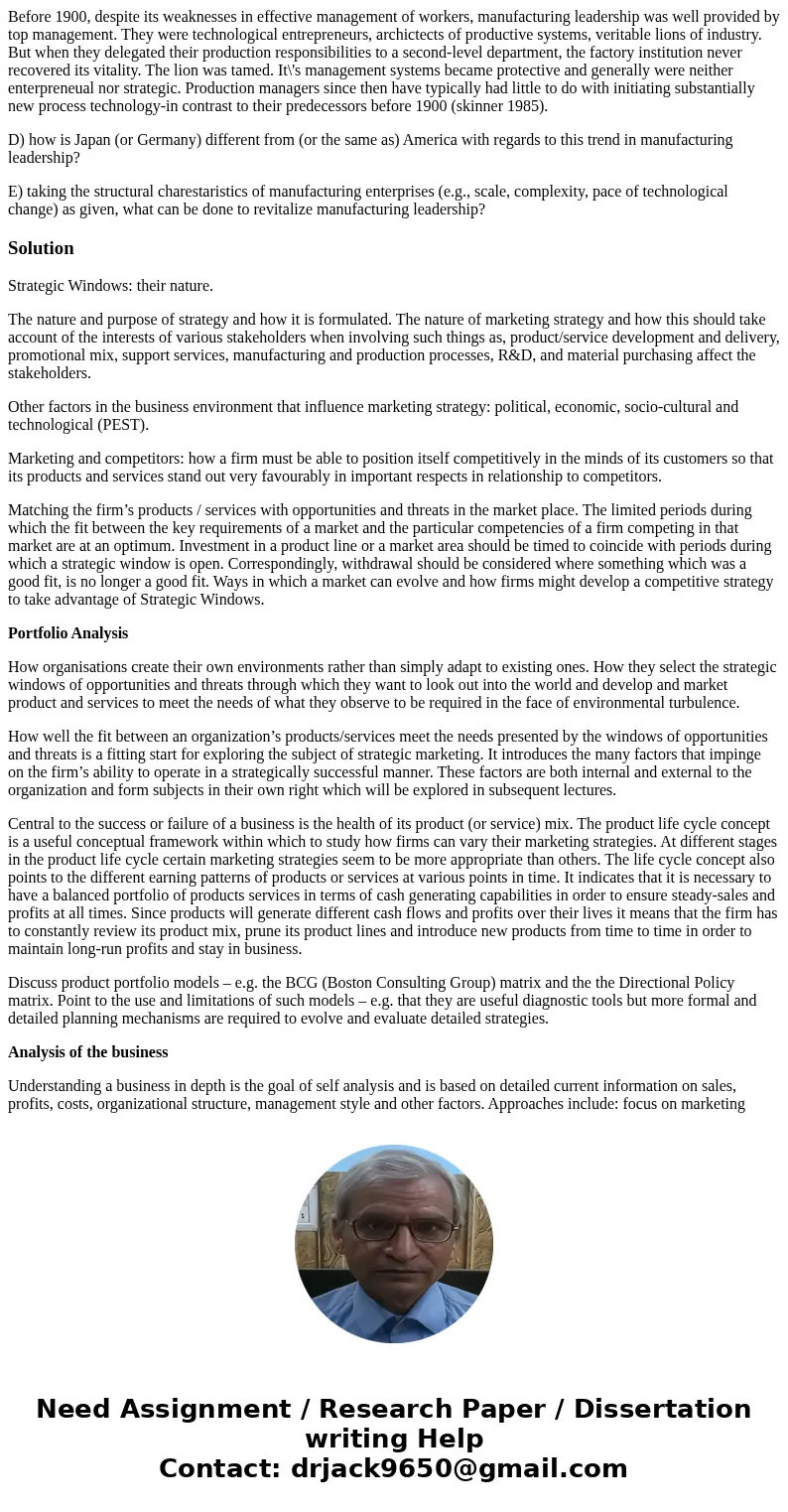
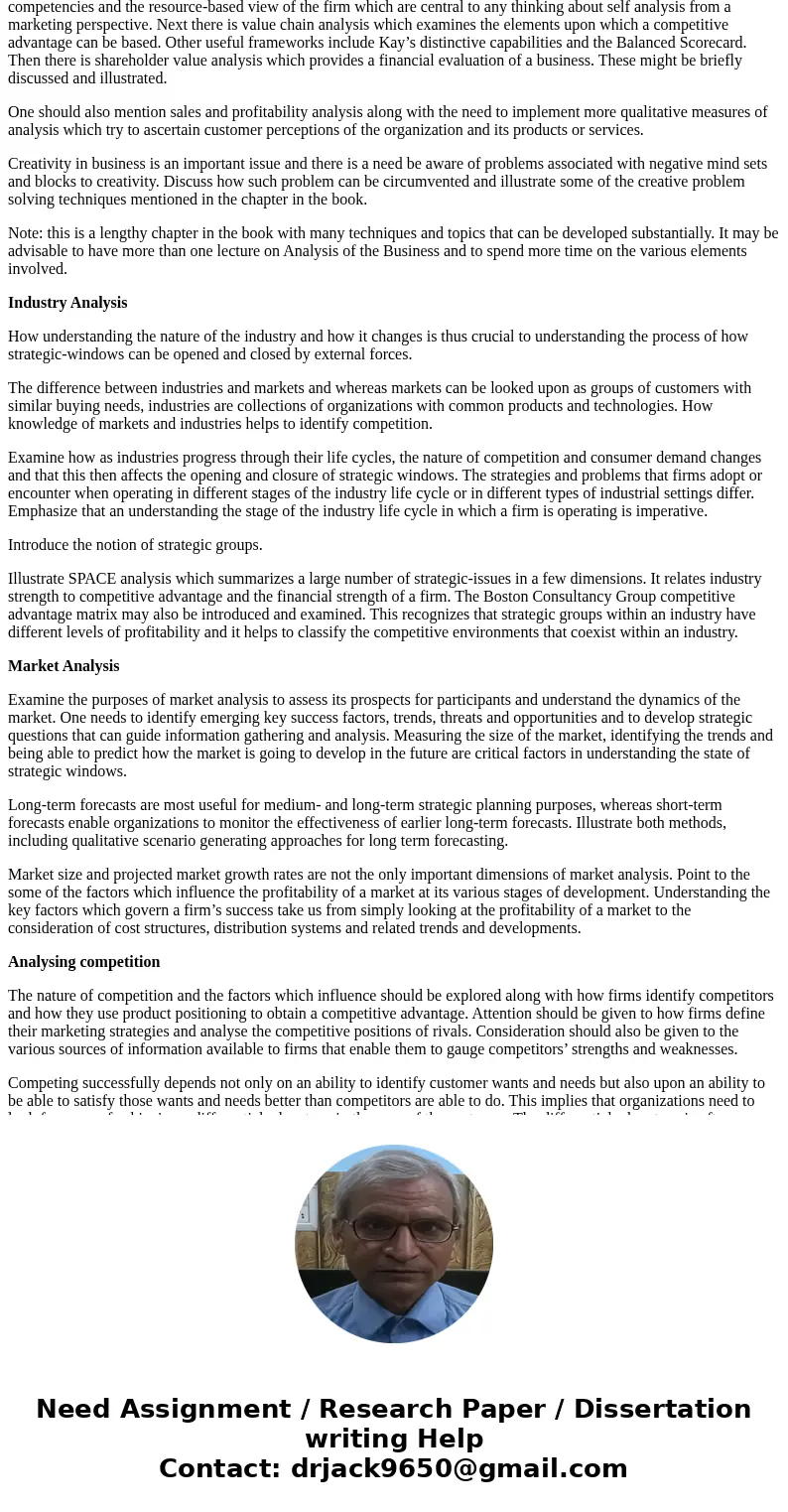
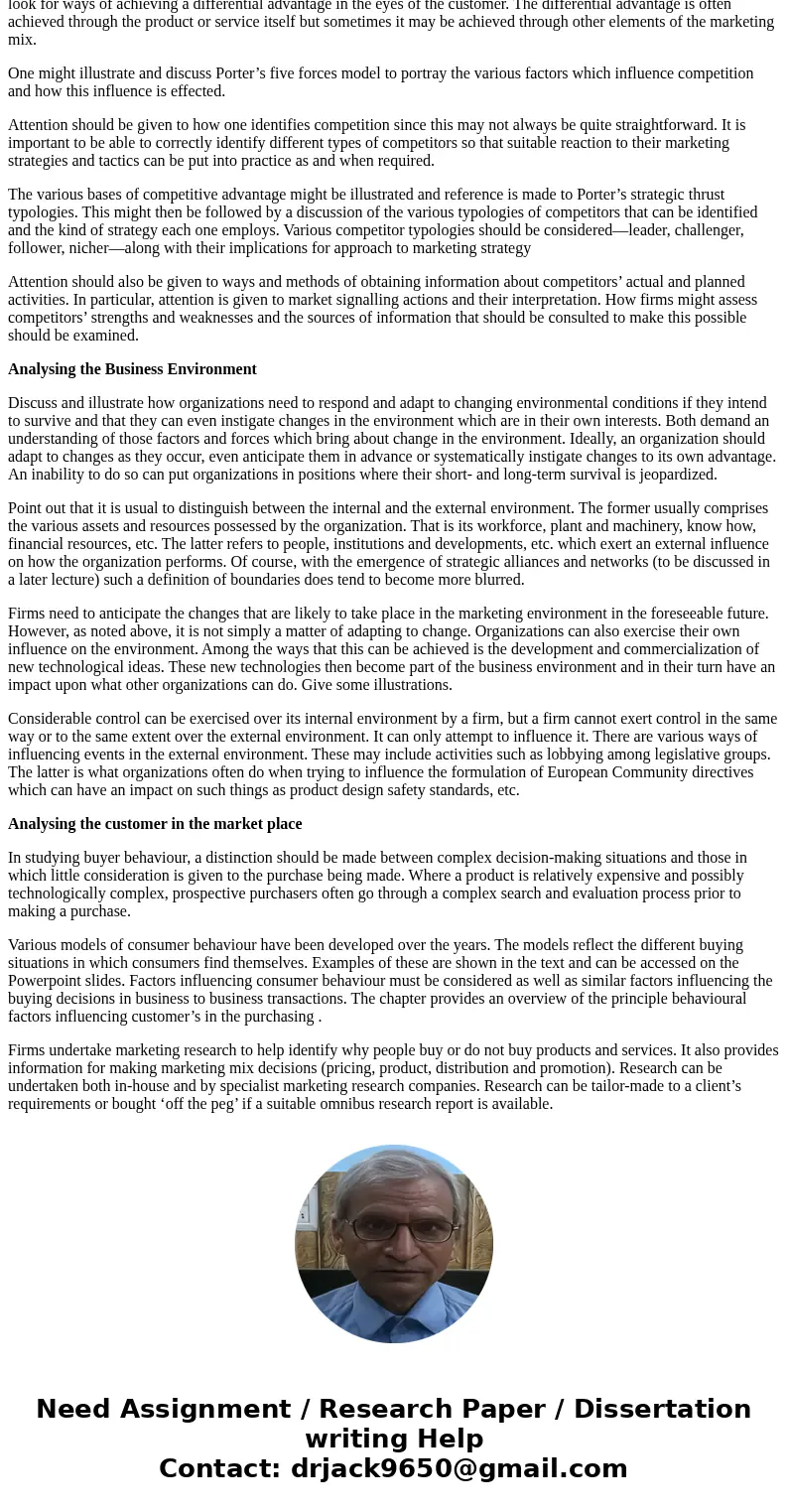
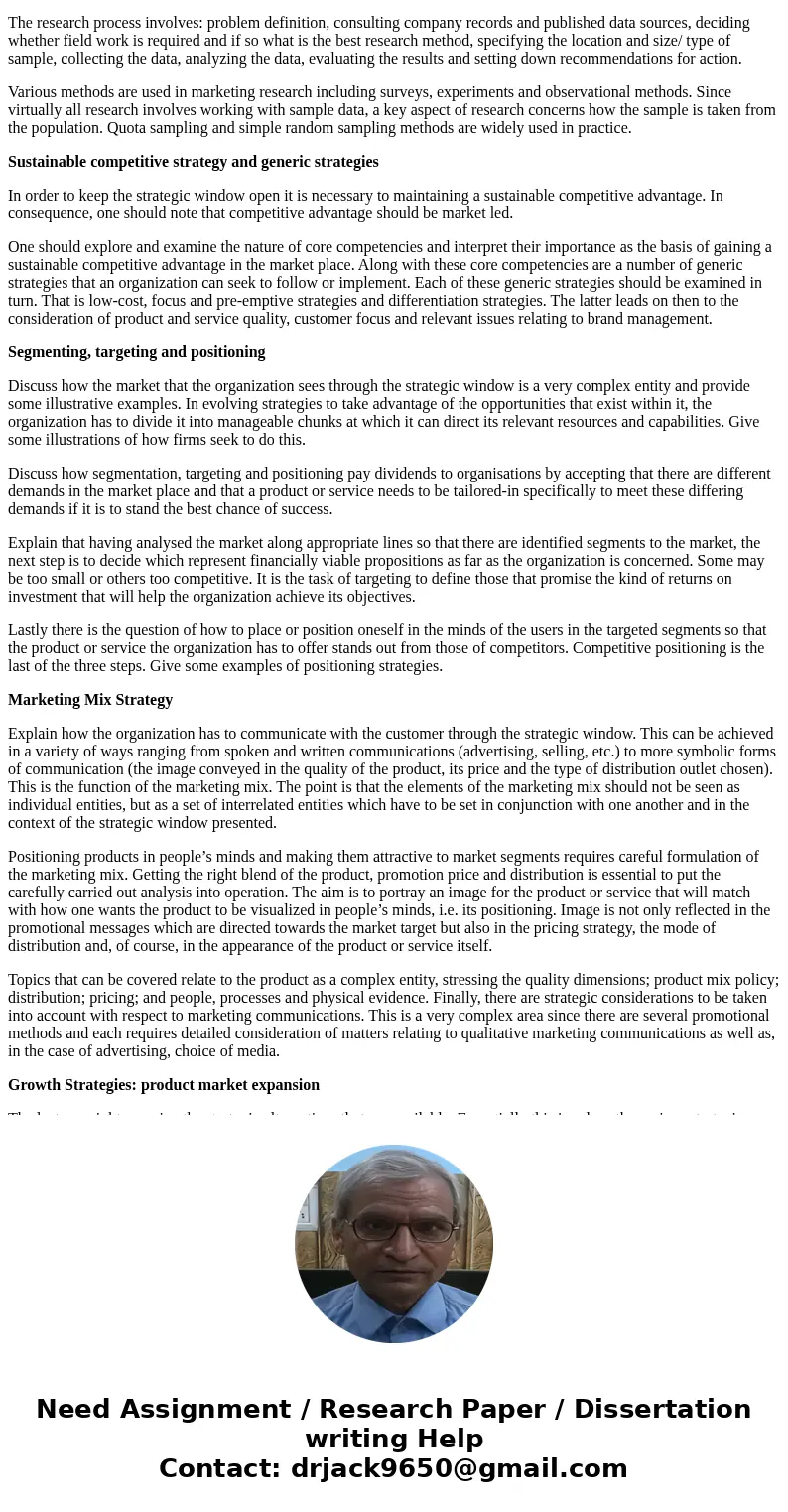
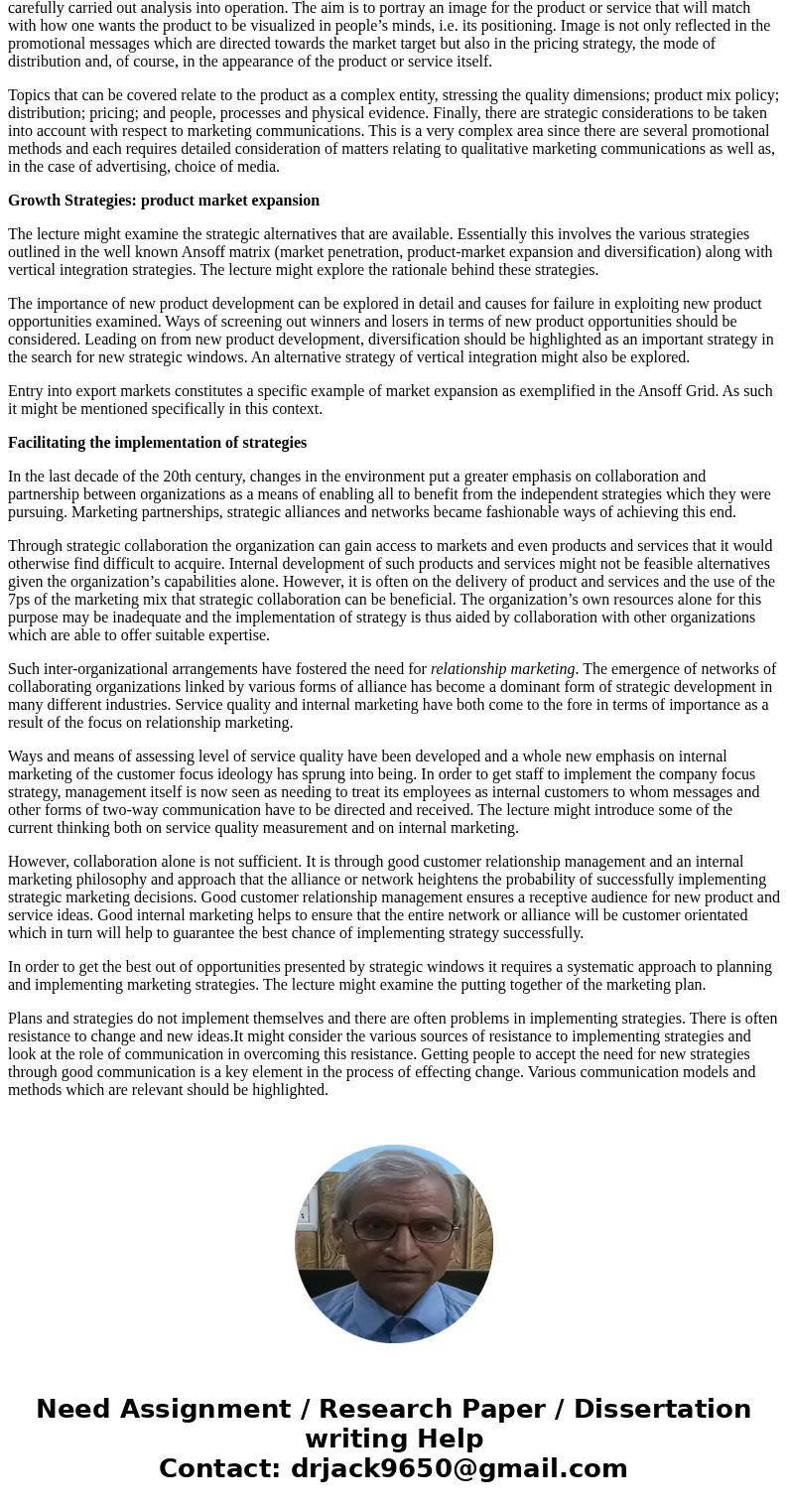
 Homework Sourse
Homework Sourse